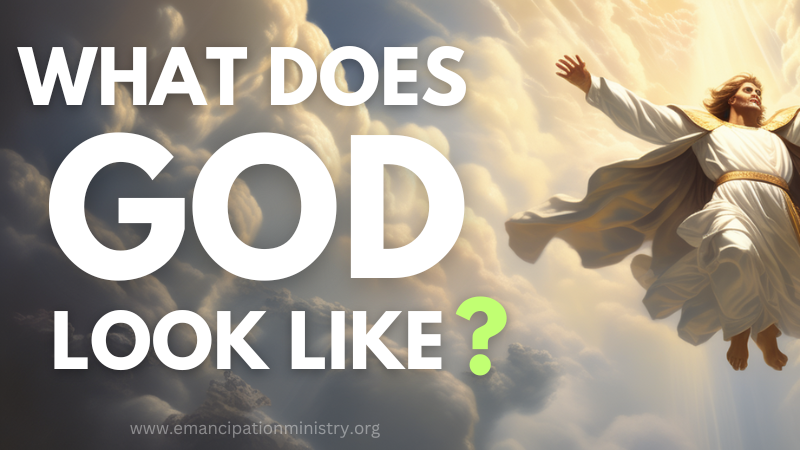Contents
What does God look like?
One of the fascinating questions I am asked a lot as a pastor is, “What does God look like?” Throughout history, this question has captured the attention and affection of seekers. We shall take a spiritual trip to investigate the nature of God’s appearance in this blog post, using theological thoughts and biblical knowledge as a guide.
Understanding the Limitations of Human Perception

-
- Invisible Spirit: The Bible affirms that God is spirit (John 4:24), transcending the limitations of a physical form. Our human senses, rooted in the material world, may struggle to comprehend the essence of a divine, spiritual being.
-
- Anthropomorphic Language: The scriptures often employ anthropomorphic language, describing God in human terms to facilitate understanding. Phrases like “the hand of God” or “the eyes of the Lord” convey divine attributes in relatable terms.
Exploring Biblical Imagery
-
- Genesis 1:26-27 (NIV): “Then God said, ‘Let us make mankind in our image, in our likeness.'” This foundational verse hints at a connection between humanity and the divine, suggesting that aspects of God’s nature are reflected in us.
-
- Colossians 1:15 (NIV): “The Son is the image of the invisible God.” Jesus Christ, the incarnate Son, provides a tangible expression of the invisible God, offering humanity a glimpse into the divine nature.
Understanding the Mystery of the Incarnation

-
- John 1:14 (NIV): “The Word became flesh and made his dwelling among us.” The incarnation of Jesus Christ is a pivotal event in Christian theology, representing God taking on human form to dwell among humanity.
-
- Hebrews 1:3 (NIV): Jesus is described as the “radiance of God’s glory and the exact representation of his being.” Through Jesus, we see a manifestation of God’s glory and character.
Appreciating Diversity in Religious Art
-
- Iconography and Artistic Depictions: Throughout history, various cultures have expressed their reverence for the divine through art. Icons, paintings, and sculptures offer diverse visual representations of God, providing a cultural lens through which believers connect with the divine.
-
- Symbolic Imagery: Symbolism in religious art often conveys spiritual truths. For example, a dove may symbolize the Holy Spirit, while a shepherd might represent God’s care for His people.
Cultivating a Personal Relationship with God
-
- John 14:9 (NIV): “Anyone who has seen me has seen the Father.” In this verse, Jesus emphasizes the intimate connection between Him and the Father, encouraging believers to know God through a personal relationship.
-
- Philippians 2:5-8 (NIV): The humility of Christ serves as a model for believers, urging us to adopt a servant mindset and embody the love and compassion of God.
Encountering the Divine in Nature and Creation

-
- Romans 1:20 (NIV): “For since the creation of the world, God’s invisible qualities—his eternal power and divine nature—have been clearly seen, being understood from what has been made.” Nature serves as a revelation of God’s creative genius and divine attributes.
-
- Psalm 19:1 (NIV): “The heavens declare the glory of God; the skies proclaim the work of his hands.” The beauty and majesty of the created world reflect the splendor of the Creator.
Summary
In the pursuit of comprehending “What does God look like?” we have to accept the transcendence and mystery of the divine. The scriptures direct us to view God through the prisms of faith, interaction, and revelation, even though our human minds may naturally gravitate towards concrete solutions. We get a peek at our Creator’s boundless and eternal nature through the incarnate Word, Jesus Christ, and the divine inspiration contained in the Bible.
Let us approach the subject with humility as we work through this spiritual journey, understanding that our perception of God’s appearance is formed by the various ways He shows Himself to each of us. May this journey generate a deep connection with the God who calls us to know Him intimately and develop our reverence for the sublime.

